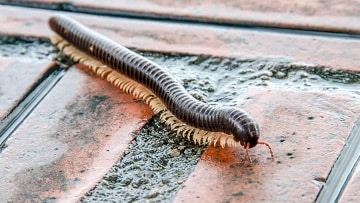Daily News Analysis
INDIAai:
News: In order to provide a framework for collaboration and cooperation in the area of artificial intelligence (AI) and emerging technologies, the INDIAai and Meta India signed a memorandum of understanding (MoU).
The National Artificial Intelligence Portal of India, or INDIAai, was introduced on May 28, 2020. It is a research organization, a knowledge platform, and an ecosystem-building project.
It aims to bring together and encourage partnerships with diverse actors in India’s AI ecosystem. It is a cooperative project of NASSCOM, the National e-Governance Division, and the Ministry of Electronics and IT (MeitY).
As an Independent Business Division of the Digital India Corporation (a not-for-profit organization founded by MeitY, NeGD was established in 2009. The Indian industry’s governing organization for IT-related goods and services is NASSCOM, a nonprofit trade organization.
For ambitious business owners, students, professionals, academics, and everyone else, it serves as the one and only comprehensive knowledge center on artificial intelligence and related subjects.
New Millipede Species:
News: The metropolis of Los Angeles in the United States has a new kind of millipede burrowing below it.
A thread millipede is the newly discovered species. It is around the width of pencil lead and roughly the length of a paper clip. Illacme socal is its official scientific name. It resembles the sinuous, translucent tentacle of a jellyfish.
The organism is blind, secretes strange chemicals, and burrows four inches below the surface. It uses antennas that resemble horns and stick out of its head to navigate. The arthropod class Diplopoda includes millipedes.
They are invertebrates that are cylindrical or only slightly flattened. While millipedes have many feet, none of them quite have a thousand, the word “millipede” literally translates to “a thousand feet.”
They have several segments that make up their bodies, and each segment has two sets of legs that connect to the underside of the body. Being a detritivore, it consumes dead organic matter found in the soil, including decaying leaves, damp wood, and other items that are found in their moist environment below ground.
Markarian 421 : Supermassive Black Hole
News: The Supermassive Black Hole Markarian 421’s twisted riddles are revealed by NASA’s IXPE Mission.
A supermassive black hole known as Markarian 421 is responsible for the high-energy jet of particles that is directed at Earth. It is situated in the constellation Ursa Major, 400 million light-years from Earth.
A supermassive black hole is one that is more than 50,000 times as big as the sun. These black holes are much too big to have developed from a single star’s gravitational collapse.
A supermassive black hole can be located in the heart of practically every galaxy, and they are constantly present there. X-ray Polarimetry Explorer (IXPE) is a joint venture between the Italian Space Agency and NASA.
It investigates a variety of high-energy objects, including supernova remnants, supermassive black holes, and other objects that are among the most extreme and enigmatic in the cosmos.
It is the first satellite specifically designed to measure the polarised X-rays emitted by celestial bodies like neutron stars and supermassive black holes in order to uncover previously undiscovered facets of the cosmos.
Ureilite : Rare And Ancient Meteorite
News: A team of researchers from Allahabad University and the University of Bern in Switzerland has discovered that the Dhala crater was created by the collision of the extremely uncommon and old meteorite known as ureilite.
Only a small percentage of meteorites on Earth are ureilite, a rare kind of early meteorites. It is called after the Russian hamlet of Novo Urei, where the first specimen was found.
They are made up of silicate rock, primarily olivine and pyroxene, with a small amount of fine-grained silicates, metal sulphides, and less than 10% carbon (diamond or graphite).
They have stretched cavities that are normally all the same length. The microscopic, spherical grains known as chondrules, which formed in the early solar system, are absent from ureilites, in contrast to many other stony meteorites.
Because of how closely the material from which the solar system arose resembles ureilites, they are regarded as primitive meteorites.
Nasa’s OSIRIS-REx Spacecraft : Back To Earth
News: The OSIRIS-REx probe, operated by NASA, just executed a crucial course correction to secure its safe return to Earth from the asteroid Bennu.
A NASA spacecraft mission dubbed OSIRIS-REx was created to investigate the Bennu near-Earth asteroid. OSIRIS-REx stands for “Origins, Spectral Interpretation, Resource Identification, Security, Regolith Explorer.”
The objective is to bring a sample to Earth that is at least 2.1 ounces in weight from the asteroid 101955 Bennu, formerly known as 1999 RQ36. The project will advance our knowledge of asteroids that may strike Earth and assist scientists in their investigations into the origins of life and planet formation.
It is the first American spacecraft to gather an asteroid sample. In 2018, it arrived at its intended asteroid, and it is already bringing a small sample to Earth for analysis. In 2023, the samples will touch down on our planet.








